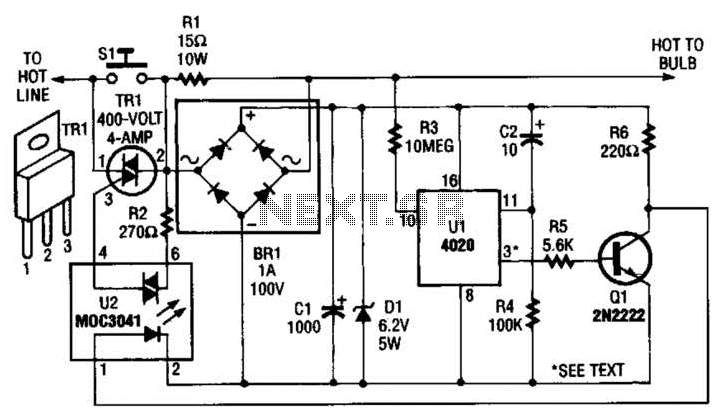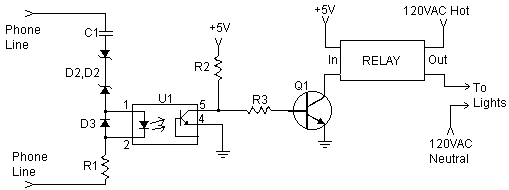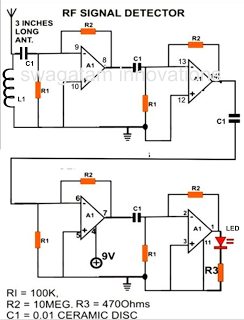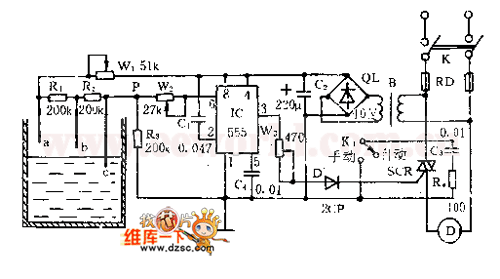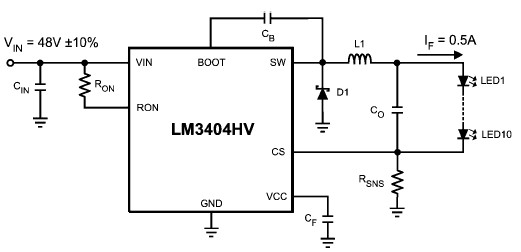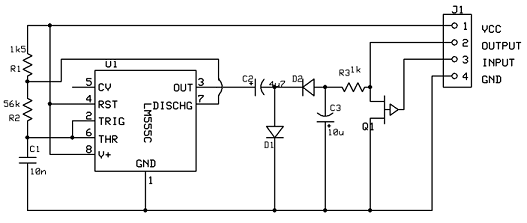
14 V battery charger circuit and troubleshooting Schematic Diagram
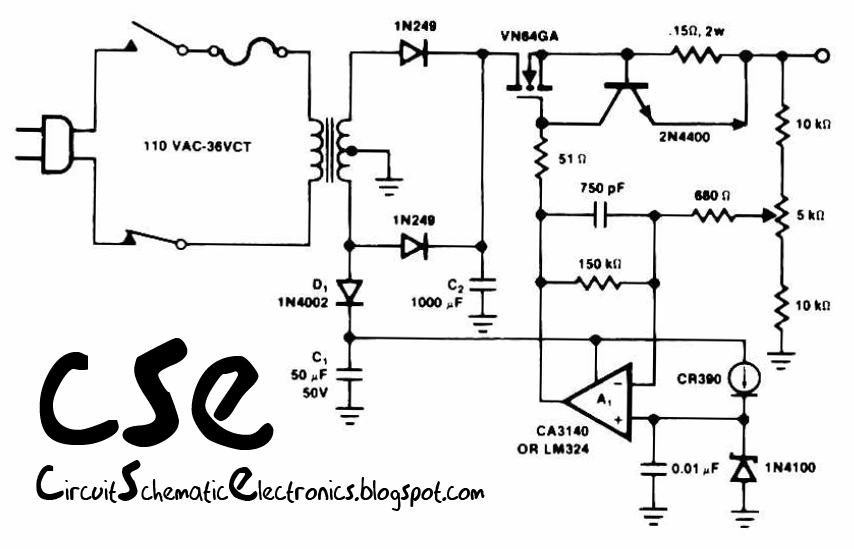
This circuit utilizes the operational amplifier IC LM324 to drive the VN64GA with an error signal and to regulate the output voltage. The output voltage generated is pulsating DC, which is suitable for battery charging applications. Additionally, this circuit can be adapted for use as a regulated DC power supply system.
The circuit employs the LM324 operational amplifier, which is a quad op-amp, allowing for multiple signal processing tasks within a single package. The LM324 is configured in a feedback loop to compare the output voltage with a reference voltage, generating an error signal that is fed into the VN64GA. The VN64GA is a voltage regulator that helps maintain a stable output voltage despite variations in input voltage or load conditions.
The pulsating DC output produced by this configuration is particularly advantageous for battery charging, as it can effectively charge batteries by providing the necessary voltage and current. The circuit's design ensures that the output waveform is suitable for the charging profile of the battery, which may require a specific voltage level and current flow for optimal charging efficiency.
To convert this circuit into a regulated DC supply, additional components such as smoothing capacitors and possibly a secondary feedback mechanism may be incorporated. Smoothing capacitors can be added to the output to filter the pulsating DC into a more stable DC voltage, reducing ripple and providing a cleaner output for sensitive electronic applications.
In summary, this circuit leverages the capabilities of the LM324 op-amp and VN64GA regulator to create a versatile power supply solution that can be used for both battery charging and regulated DC supply applications. Its adaptability and effectiveness make it a valuable design in various electronic systems.This circuit is also use operational amplifier IC LM324 to drive the VN64GA with the error signal and to control output voltage. This output voltage is pulsating DC, which is quite satisfactory for battery charging. This circuit also can be converted to the system regulated DC supply. 🔗 External reference
The circuit employs the LM324 operational amplifier, which is a quad op-amp, allowing for multiple signal processing tasks within a single package. The LM324 is configured in a feedback loop to compare the output voltage with a reference voltage, generating an error signal that is fed into the VN64GA. The VN64GA is a voltage regulator that helps maintain a stable output voltage despite variations in input voltage or load conditions.
The pulsating DC output produced by this configuration is particularly advantageous for battery charging, as it can effectively charge batteries by providing the necessary voltage and current. The circuit's design ensures that the output waveform is suitable for the charging profile of the battery, which may require a specific voltage level and current flow for optimal charging efficiency.
To convert this circuit into a regulated DC supply, additional components such as smoothing capacitors and possibly a secondary feedback mechanism may be incorporated. Smoothing capacitors can be added to the output to filter the pulsating DC into a more stable DC voltage, reducing ripple and providing a cleaner output for sensitive electronic applications.
In summary, this circuit leverages the capabilities of the LM324 op-amp and VN64GA regulator to create a versatile power supply solution that can be used for both battery charging and regulated DC supply applications. Its adaptability and effectiveness make it a valuable design in various electronic systems.This circuit is also use operational amplifier IC LM324 to drive the VN64GA with the error signal and to control output voltage. This output voltage is pulsating DC, which is quite satisfactory for battery charging. This circuit also can be converted to the system regulated DC supply. 🔗 External reference
